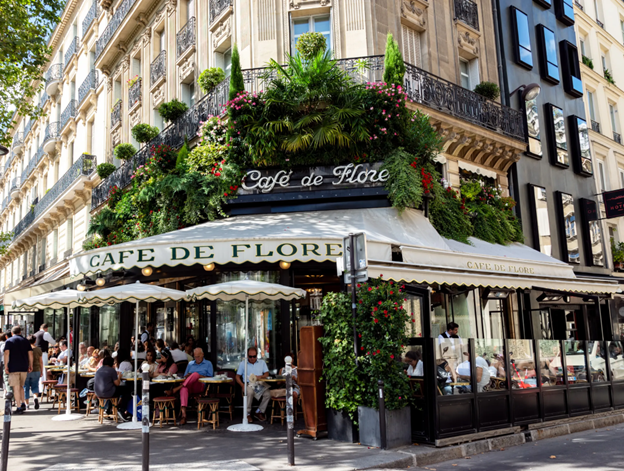The Impact of Zoning
Why does our built environment look the way it does in Grand Rapids? The invisible hand of zoning plays a key role.
A long time ago, in an era far, far away, zoning did not exist. Well, actually, that was not that long ago. It was just about 100 short years ago. A blip in human history. Much of our city was already built and easily traversed by streetcar beforehand. Our city of Grand Rapids adopted a zoning ordinance in the early 1920s2, and we have amended it many times since. You can see an original copy of the 1951 Official Zoning Maps of the City of Grand Rapids, MI for yourself in the archives of the downtown Grand Rapids Public Library.
Many events led up to our city’s zoning ordinance. The industrial revolution filled cities around the world with factory smoke, filth, crime, and deprivation. Zoning was thought up to solve these problems through land-use separation. Overall health could be improved in cities by locating polluting and hazardous production activities far away from where people work, live, and play. This was good. Germany was the first place to put this to action. In 1891, the city of Frankfurt implemented the first zoning act. From then on, the idea of classifying building forms and functions and regulating them differently in distinct parts of a city was seen as cutting edge municipal administration. American zoning codes were initially modeled off of German zoning codes.
In the 1920s, Grand Rapids was a prominent manufacturing center for furniture. Our economy declined with the Stock Market crash of 1929, and countless residents were unable to make mortgage payments in the Depression that followed. This was worsened by the fact that many mortgages of the time were interest-only payments, required 50 percent down, and full repayment was due in 5-7 years.1 Enter the Roosevelt administration’s New Deal. Two programs were designed in this era: One program to support existing homeowners and another to make homeownership possible for first-time buyers.1 The Home Owners’ Loan Corporation (HOLC) purchased existing mortgages and issued new mortgages for homeowners on the brink of default. The Federal Housing Administration (FHA) insured bank mortgages to help middle-class renters purchase their first homes. Both programs encouraged home ownership, as long as the home being mortgaged was a detached, single-family home and in a newly built suburb.
Both the HOLC and FHA discriminated against black residents and immigrants and often denied mortgages for these families. Our city was not exempt from this de jure segregation, and we still live with the enduring effects of it. Many residents have not been able to build equity through home ownership because of their race. In 1937, Grand Rapids was mapped by the HOLC. Our city was divided up into a color-coded map to assess mortgage risk, with the safest neighborhoods colored green and the riskiest colored red. The safest areas on the Grand Rapids 1937 HOLC map were those where (a) homes were likely to maintain their value and (b) where homeowners were likely to be able to make payments on HOLC mortgages. On our city’s HOLC map, you can see that the race of inhabitants was noted for each area, and black or Italian residents were described as “infiltration” of an area.
Note that even the beautiful, historic homes in Heritage Hill (areas C10, C13, and D5) were mapped as unsafe areas. Comments on the Grand Rapids HOLC map note that in these areas “some large, good modern single residences still remain,” but detrimental influences are prevalent, including age and obsolescence, and “encroachment of business and apartments.” This is no surprise. The FHA discouraged banks from issuing loans in urban neighborhoods. As written in an FHA Underwriting Manual, the manual first issued in 1935 which guided home appraisals done by FHA contractors, “older properties … have a tendency to accelerate the rate of transition to lower class occupancy” and “if a neighborhood is to remain stability, it is necessary that properties shall continue to be occupied by the same social and racial classes.”1
Our current zoning code carries over many ideas from our city’s original zoning maps. However, we no longer have a residential zone that only allows the dwelling type of detached, single-family homes. Grand Rapids’ most restrictive residential zone is the low-density residential (LDR) zone, and it makes up 60% of all land in our city. Both detached and attached single-family homes as well as two-family homes are allowed in this category, but multi-family dwellings are not allowed.
Compared to other countries in the world but similar to other cities in the United States, we have an unusually high level of legal separation of residential from other land uses and an unusually radical way of legally guarding the single-family home. How do other countries zone? Well, countries like England, France, Germany, Sweden, Russia, Japan, and Australia have residential zones, too, but these “residential” zones are not so exclusive. In Germany, the residential district is a misnomer: Planners allow nonresidential services that serve the everyday needs of the neighborhood residents, such as grocery stores, bakeries, restaurants, doctor’s offices, and nondisruptive industries. This creates a walkable environment, where residents can access a nearby bakery by foot since it is close to their home.
My concern is whether zoning is bringing about the benefits originally promised. Zoning was invented as a municipal tool promised to mitigate urban pollution and improve public health and safety. If we classified activities on land in a certain way, certain benefits would follow, such as separating homes from polluting and hazardous production activities. With this in mind, why are many everyday activities banned from residential zones then? Are neighborhood bakeries on street corners hazardous for public health? Do small medical offices give off noxious fumes? What public health problems are solved by legalling banning multi-family homes from low-density residential areas? What level of car dependence are we reinforcing through zoning uses far, far away from each other? Has zoning frozen our city in a sepia toned polaroid picture, with preservation of the status-quo as the principal reason for zoning the way we do?
The future trajectory of zoning in Grand Rapids is likely going to remain a local issue. The United States has no federal law on urban land use. In 1926, land-use control through zoning became legal in Euclid v. Ambler, but zoning remains a local matter. Zoning is not a glamorous topic, but it is an important one. It determines how our built environment looks, which shapes our everyday life. It is a tangible policy. Wish your neighborhood had a coffee shop within walking distance? Well, if that spot in mind is zoned low-density residential, too bad. It is illegal. Thank zoning. I know I wish I had third-places within walking distance to meet my neighbors at.
- Janelle Rai
Sources:
1 Rothstein, Richard. The Color of Law: A Forgotten History of How Our Government Segregated America. New York City, Liveright Publishing Corporation, 2017, pp. 63-67.
2 Hirt, Sonia A. Zoned in the USA: The Origins and Implications of American Land-Use Regulation. Ithaca, Cornell University Press, 2014.

